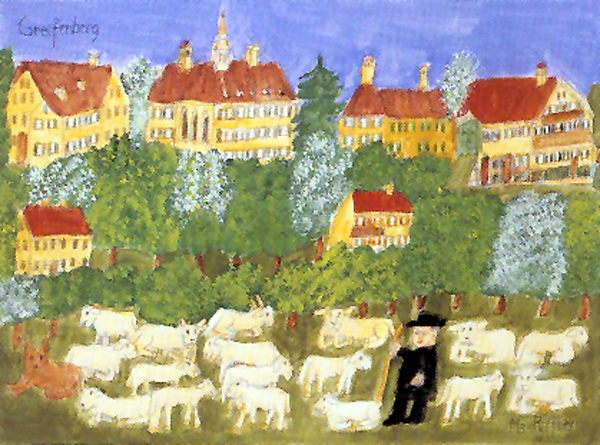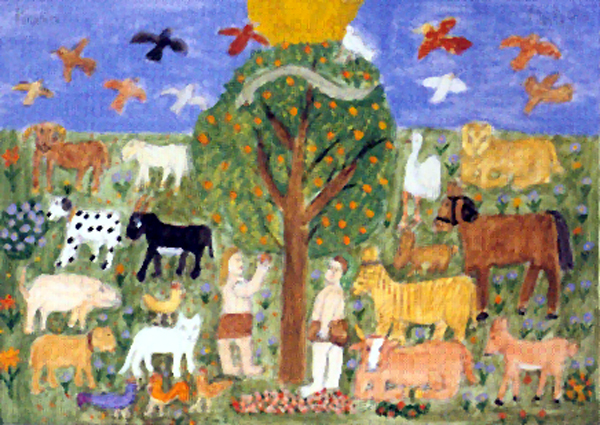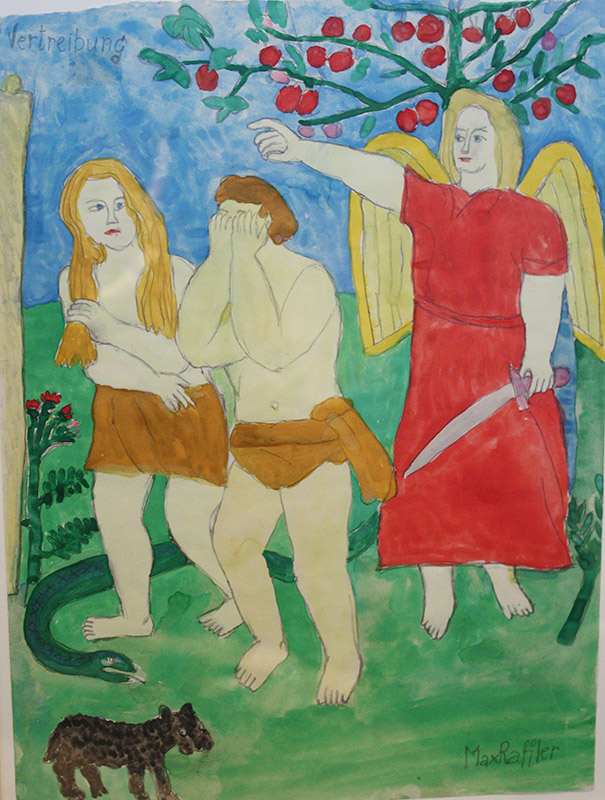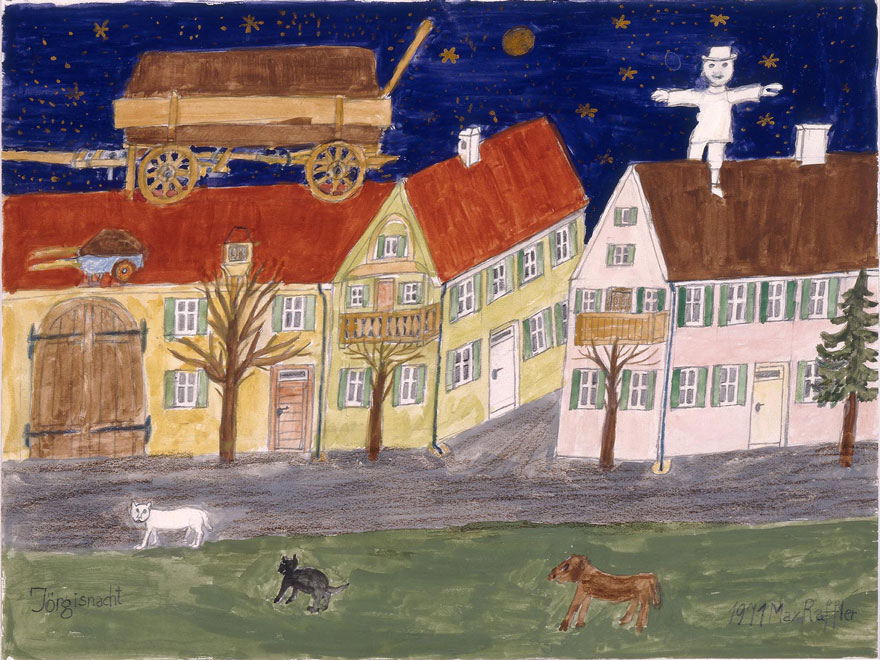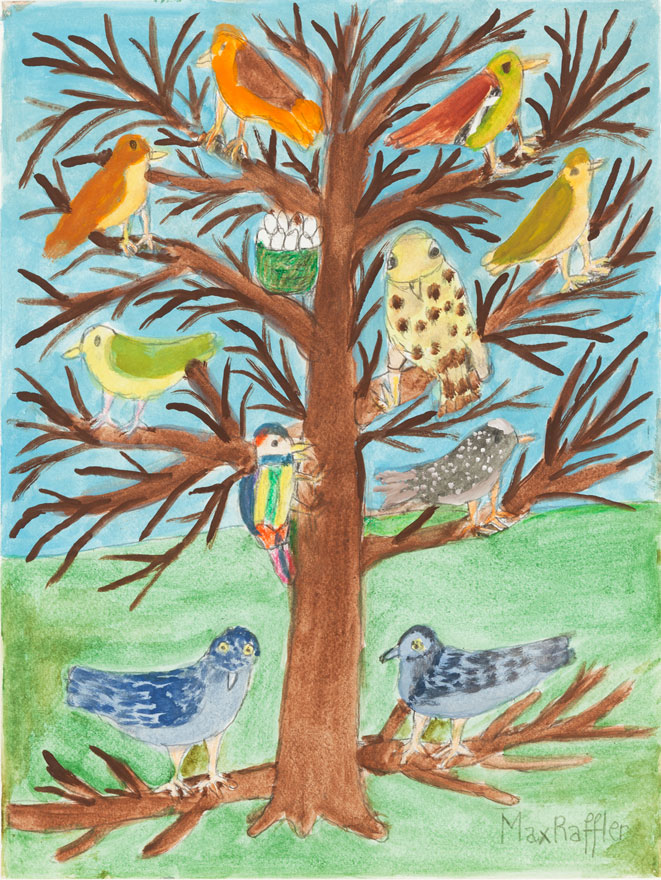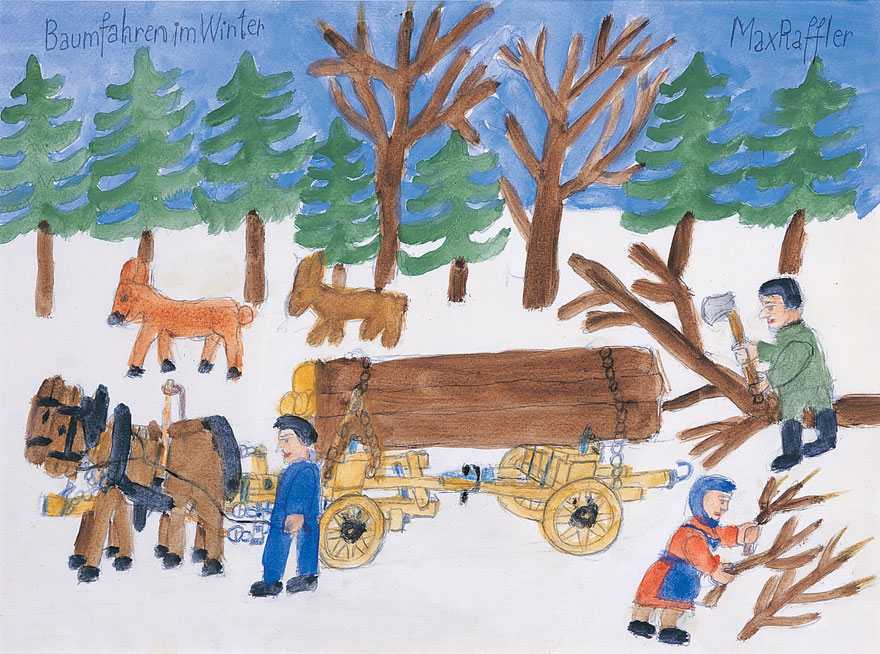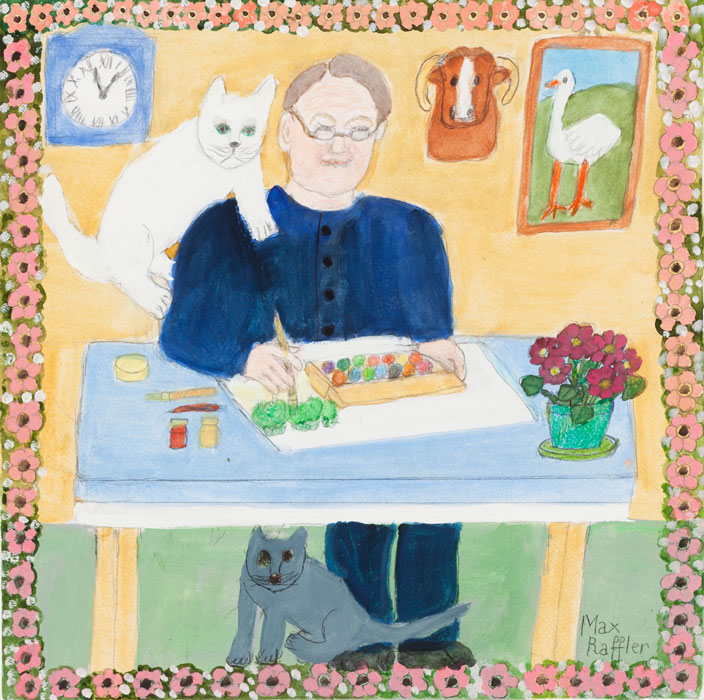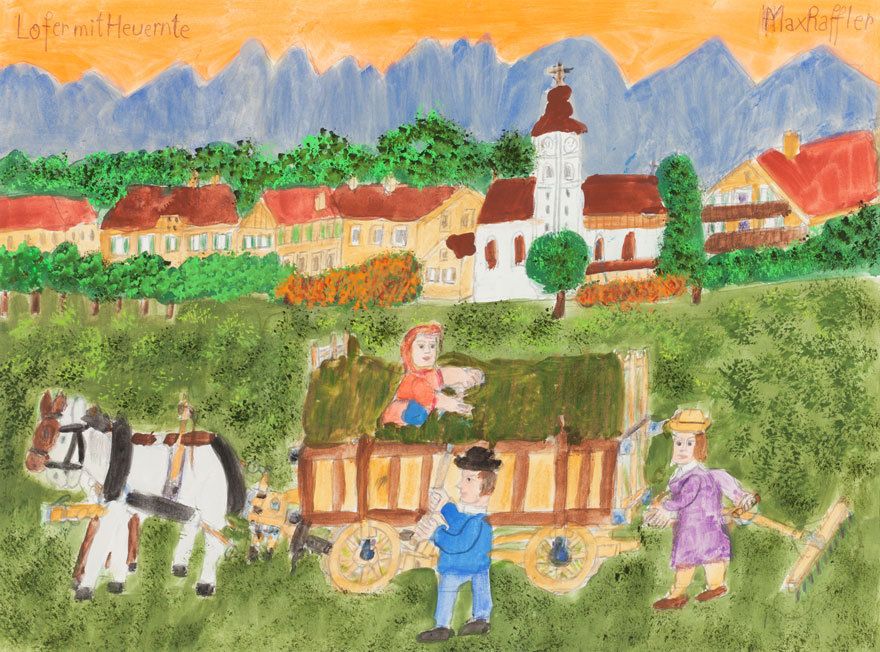Max Raffler
1902–1988, German
Tags: Painting
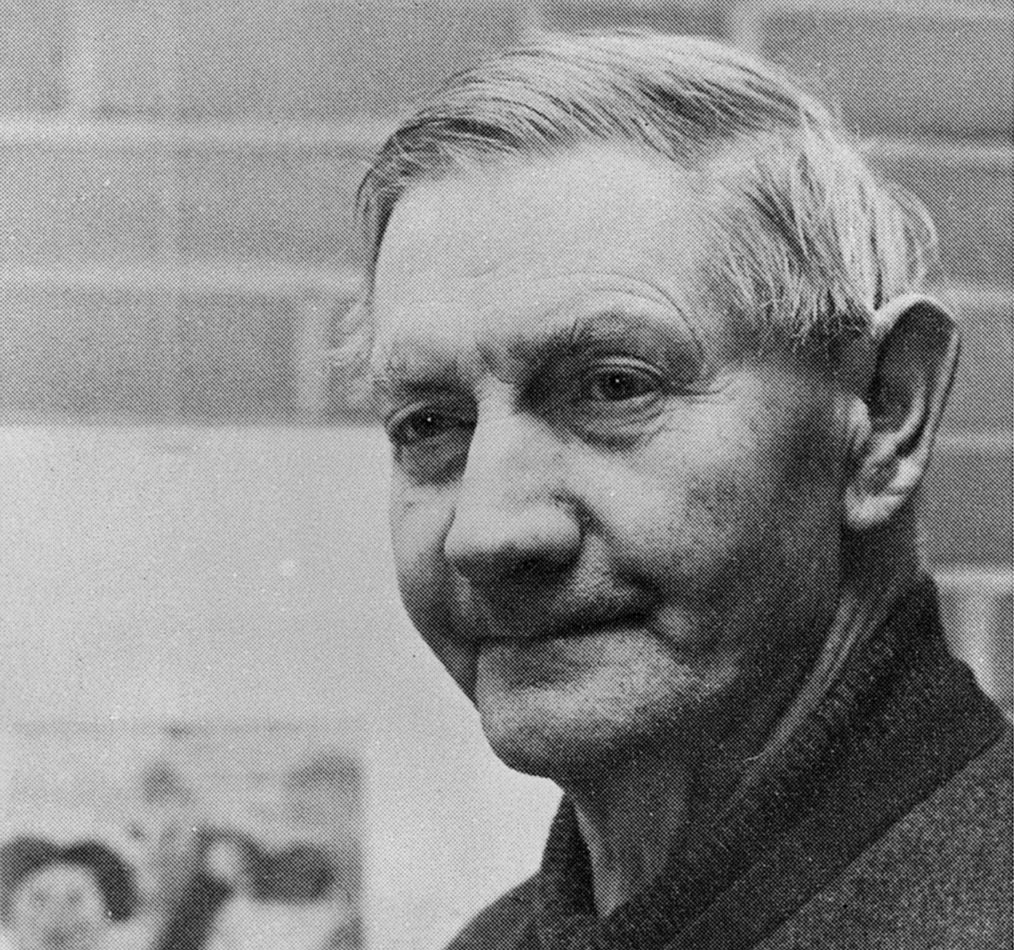
Max Raffler’s paintings portray farm life in the village of Griefenberg, in Bavaria, a region of southern Germany, where he was born and spent his entire life. His father was mayor of the village from 1911 to 1930. After his parents died, Raffler and his two sisters ran the family farm. Raffler’s sisters disparaged his art making and destroyed many of his paintings. He wrote poems as well, which are also lost.
A priest encouraged Raffler to paint religious scenes and displayed them in the local church. Inspired by rural shrines, devotional images, and Baroque church art, Raffler created many religious works, including his celebrated Stations of the Cross for the Maria am Wege church in Windach. His popular paintings of cats were reproduced in a book. Other subjects include still lifes, self-portraits, landscapes, local scenes, and everyday objects. His works are in many collections and have been exhibited in Munich, Zurich, Amsterdam, and Chicago.
